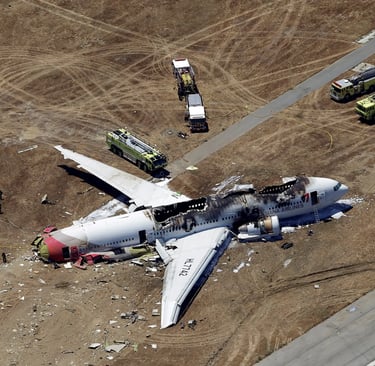The Chilling Mystery of the Korean Plane's Black Box Failure


Introduction to the Incident
The mystery surrounding the tragic crash of the Korean plane has deepened significantly with the revelation that the black box ceased functioning merely four minutes before the incident. This critical piece of information raises several questions about the circumstances leading up to the accident and the reliability of aircraft technology.
Understanding the Black Box
The black box, formally known as the flight data recorder (FDR), is an essential instrument in aviation safety. It records vital parameters such as altitude, speed, and engine performance, as well as cockpit conversations. This data is paramount for investigating air accidents and understanding their causes. The failure of the black box four minutes prior to the crash not only complicates the investigation but also pushes engineers to re-evaluate the reliability of these devices under dire circumstances.
Implications of the Black Box Failure
The failure of the black box prompts serious concerns regarding the protocol and technology that aviation authorities have relied upon for years. Investigators now find themselves at a crossroads, needing to piece together the plane's final moments without access to the usual wealth of data. The loss of this vital recording means that crucial information concerning pilot communication or potential mechanical failure might be permanently withheld from the investigative process.
The last four minutes of operation are often critical in determining what goes wrong in an aircraft. As such, the inability to access black box data from those minutes suggests there may be additional layers to this mystery. It shines a light on the overall safety standards utilized in the aviation industry, questioning whether enough is being done to safeguard such crucial instruments from malfunction.
Expert Opinions and Future Considerations
Experts in aviation safety are now calling for a thorough review of black box technology. Some suggest enhancing the design and robustness of these critical devices to withstand more extreme conditions. While such improvements may increase costs, they could also prevent similar tragedies in the future by ensuring that vital data is protectively contained and retrievable should an accident occur.
Furthermore, the aviation industry must consider revisiting protocols when it comes to both pilot training and aircraft maintenance. In light of this incident, there may be educational gaps in how pilots can react to systemic failures and unexpected malfunctions. Comprehensive training could potentially equip pilots with the skillsets necessary to handle unforeseen challenges more effectively.
Conclusion: Seeking Answers
The incident involving the Korean plane serves as a reminder of the complexities and unpredictabilities of aviation. As investigations continue, it remains imperative for authorities to find answers—both for the sake of the families affected by this tragedy and for the safety of future flights. The mystery that deepens with the cessation of the black box's function is a call to action for better technology, training, and protocols in the aviation industry.
